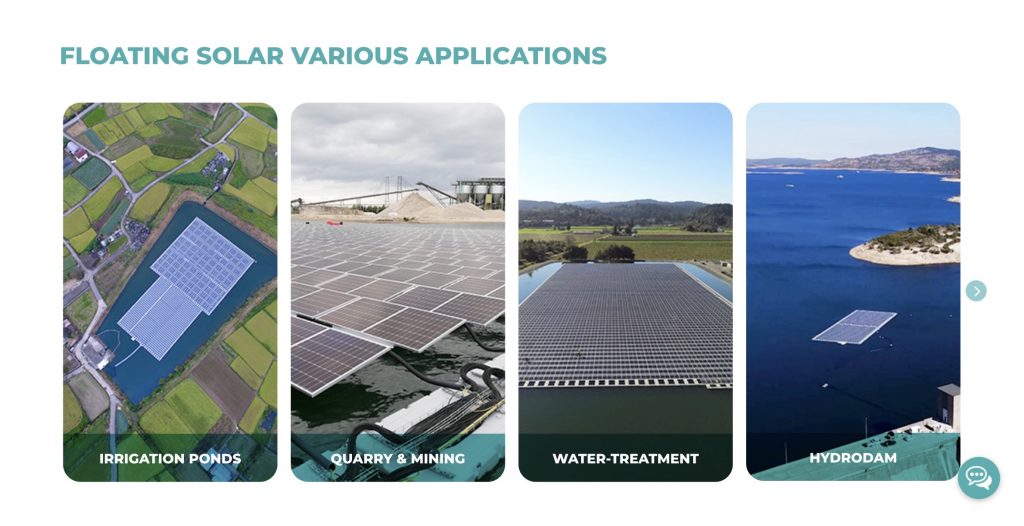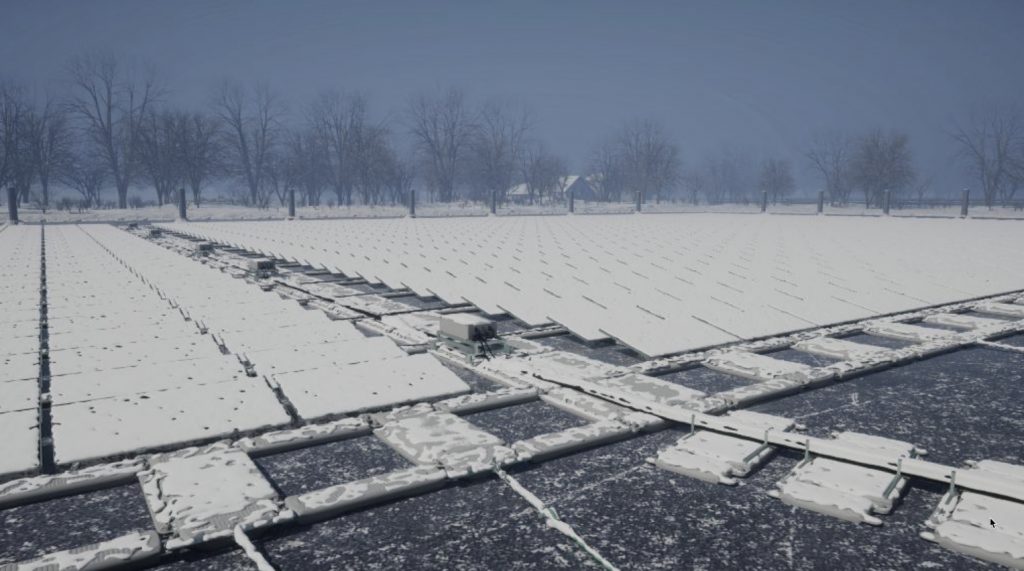By David Dodge, GreenEnergyFutures.ca
The idea of floating solar has been around for many years but Ciel & Terre has made a thriving business out of it by installing more than 300 floating solar systems around the world.
It turns out there are many places and applications where land and roof space is in short supply and floating solar fits the bill.
Ciel & Terre installs projects on water treatment ponds, quarry ponds and other bodies of water not used for other purposes such as recreation.
Their largest project is an 88-megawatt Changbin project in Taiwan which was installed on calm salt water around the coast. The project is being expanded to 192 megawatts.
Ciel et Terre was founded in 2011 and is headquartered in France and has more than 200 employees with offices in Taiwan, Japan, India and in the U.S.
Ciel et Terre has installed more than half a gigawatt of floating solar with 1.6 gigawatts of projects in development.
“The markets that have really taken off for us are the island nations like Japan and Taiwan, where they don’t have enough land to build these large-scale solar systems, so they use the inland water bodies,” says Chris Bartle the sales and marketing manager for Ciel & Terre in the U.S.
Water treatment ponds and more
Floating solar is usually installed on bodies of water that are not used for recreation or any other purpose.
“In the U. S. we’ve done wastewater treatment ponds, quarry lakes, and industrial ponds,” says Bartle.
In drought-stricken areas floating solar helps reduce evaporation it blocks sunlight and slows algae growth.
Bartle says they do tilt the solar modules at either five degrees or 12 degrees depending on the location. The higher you tilt the modules the more space they require.
“We’ve decided to max out our tilt at 12 degrees, which keeps it nice and compact, and that allows us to fit one-megawatt on two acres of water surface,” says Bartle.
And a side benefit is the modules are cooled by the water which improves their performance.

What about floating solar in the great Canadian winter?
“The cold weather doesn’t scare us. We’ve got systems in Colorado, Sweden and Korea that have been frozen in ice and covered in snow,” says Bartle adding they warranty their systems to -40 degrees C.
“The floats don’t sit very deep in the water…So when that water freezes, it is freezing underneath the floats. There’s no compression going on that’s damaging the floats,” he says.
Floating solar is more expensive than ground mount solar, but as a “rough rule of thumb, floating solar might be 10 or 15 per cent more than a comparable-sized ground mount system.”

Ciel & Terre is finding customers in island nations as Bartle mentioned, but they are also finding markets with municipalities and companies that have water treatment ponds or other bodies of water and very little space on land. It also helps companies and municipalities achieve emissions and or renewable energy targets by offering another option for renewable energy production.
Ciel & Terre isn’t in Canada yet, but Bartle says they are working on project proposals for water treatment ponds, quarry lakes and reservoirs in Canada, so it’s just a matter of time.





